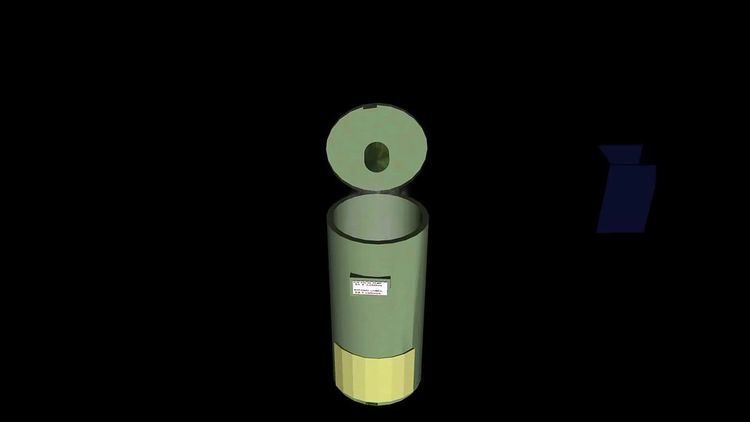 | ||
Hot container composting (also referred to as in-vessel composting for larger industrial batches) is different to cold composting, in that compost is created without losing valuable heat. Heat loss is the reason why a compost pile takes so long to decompose. Observers have noted that the time taken to create compost can be dramatically reduced by retaining the heat in a suitably insulated container. Another observation noted is the way the compostable items are added and mixed which allows for aeration. This is an important step in the process. Compost becomes anaerobic due to the absence of air, and this can result in it becoming smelly. By adding large, medium and fine items to the top of the container, space is provided in between the items for the air to flow from bottom to top. This creates a trickle ventilation. Compost made with this method is called aerobic composting (no smell).
Contents
Requirements
Insulated container polystyrene, polypropylene thick walls or cavity/ceiling insulation vents on top and bottom, a starter medium , handful of soil from garden that is a few months old containing natural microbes and bacteria, regular feeding of household and compostable waste, food scraps, fruit and vegetable peelings, egg shells , bones, grass cuttings, carbon, eg shredded paper, torn paper, cardboard, egg cartons, cereal boxes, thermometer (optional)
Method
Place the waste you want to compost in a bucket or bag, add large pieces (bones, large bark pieces or anything the size of large egg), medium pieces (carrot tops , potato skins, chopped up branches etc) and fine pieces (grass cuttings, ground egg shells) and carbon (bag of shredded paper, cut up cardboard, torn up cereal boxes, egg cartons, old magazines, newspaper).
Mix well or shake bag.
Empty bucket or bag into top of container
Close lid. It must be able to be sealed and not let air enter or escape. Only the top vent should allow a controlled flow of steam to escape. Too much and most of the beneficial heat will escape and too little and the steam turns to streams of water in the inside and drops the internal temperature which in turn lowers the rate of decomposition.
How it works
The hyperthermic bacteria present in the container , derived from the handful of garden soil you added, reproduces and multiplies very quickly, which gives off a lot of heat.
Retaining this heat is the secret to hot container composting. By keeping the container sealed, insulated and controlling the escaping steam, the temperature can be kept with the range needed for hot container composting. Temperatures higher than 70 degrees causes the important hyperthermic bacteria to die off and defeats the plan.
The smaller the pieces the quicker the decompsition. Typing paper take days, grass clippings takes weeks, branches couple of months, barks takes months,
Hot container composters aim for a temperature range of between 35 degrees celsius (95 degrees fahrenheit) and 65 degrees celsius (149 fahrenheit) to aid optimal bacterial decomposition. A suitable thermometer ,analogue or digital, is needed for monitoring this.
If you don't have a thermometer, you have to wait for the final product to inspect if it is suitable.
The bottom door is only opened to extract the compost when the top is full. The first time you open the door , there will be partially decompostible material.
This is due to the most of the decomposition work taking place on the top of the pile(where the heat is concerntrated) and this can simply be added to the top during your next top up. Your next collection will probably have been through the process and be ready for use.
Let the collected material stand for aeration for 30 minutes to let the bad odour dissipate. Either remove the larger particles and medium sizes by hand or use a sifter. The larger pieces can be used again.
Cold versus Hot composting
There are advantages and disadvantages of cold and hot composting.
